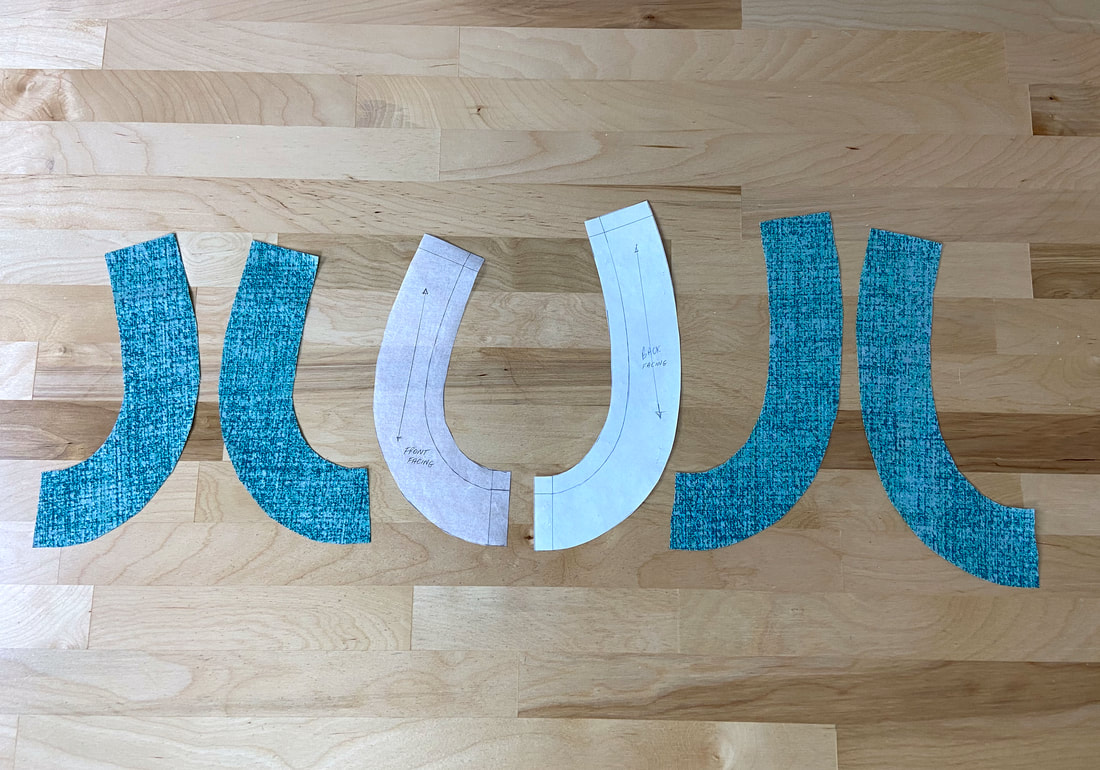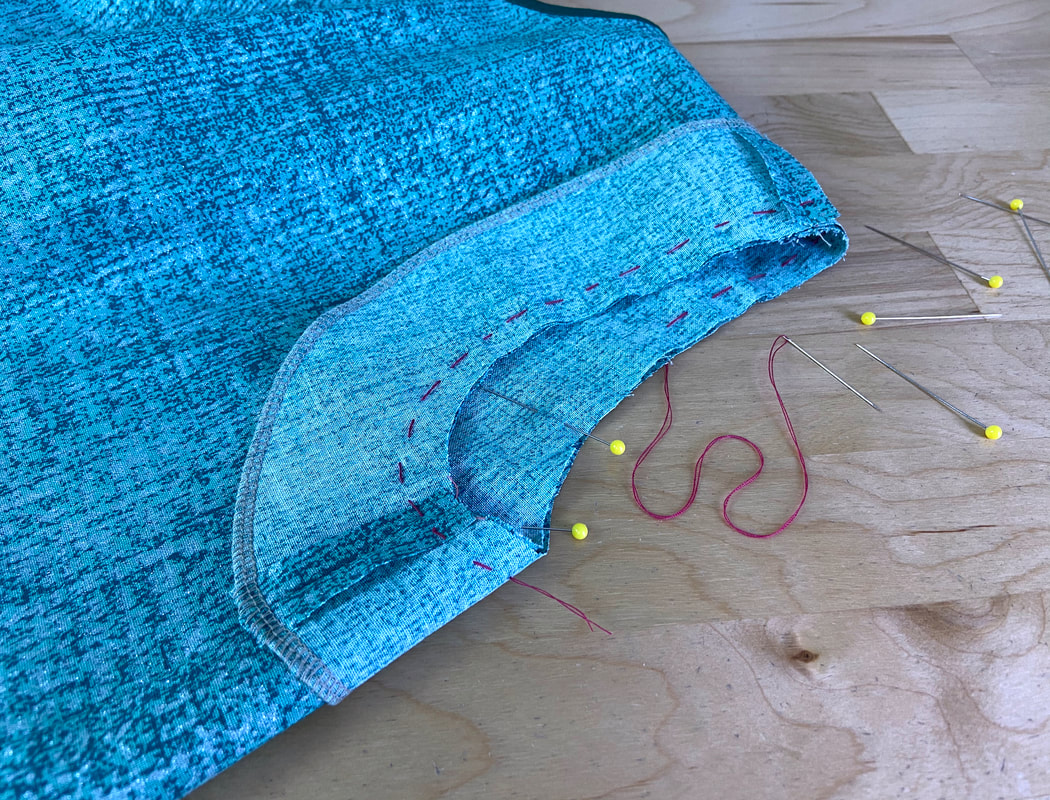Mini Tutorial: How To Sew A Faced Armhole Finish
1. Start by cutting your facing pieces. In this example, each armhole facing unit is constructed of one front piece and one back piece. Cut two (2) front and two (2) back facing layers to cover both armhole edges. The corresponding front and back pieces should be the mirror image of each other as pictured above.
2. Align each front facing piece to its corresponding back piece with face sides touching and seam edges aligning. Insert pins horizontally through all seam edges to keep the layers securely aligned during machine stitching.
The top seam (less curved area) corresponds to the garment's shoulder seam, while the bottom seam (more curved area) corresponds to the underarm and should match the garment's side seam.
The top seam (less curved area) corresponds to the garment's shoulder seam, while the bottom seam (more curved area) corresponds to the underarm and should match the garment's side seam.
3. Machine stitch both facing seams at the designated seam allowance (1/2" in tis case), and iron the finished seams with the seam allowance open.
4. Before attaching the facing compartment to the garment's armhole, it is a good idea to first, clean-finish the facing's outer edge (opposite the armhole edge) using any suitable technique of your choice. In this tutorial, a serging stitch is used to fully encase the fabric raw edge and prevent it from fraying.
Note: If you do not own an overlock machine, you can sue a simple zigzag stitch available on your home sewing machine.
Note: If you do not own an overlock machine, you can sue a simple zigzag stitch available on your home sewing machine.
5. Keeping the garment on its right side, align the facing compartment to the garment layer with face sides touching and armhole edges aligning. The facing's shoulder seam and underarm seam should perfectly align with each of the garment's corresponding shoulder seam and respectively, side seam (underarm).
Insert a few pins to keep the layers perfectly aligned in this position. If this is your first time sewing an armhole facing, it may be helpful to also hand baste the two edges together as this will provide increased control during the machine stitching process, especially along the curved underarm area.
Insert a few pins to keep the layers perfectly aligned in this position. If this is your first time sewing an armhole facing, it may be helpful to also hand baste the two edges together as this will provide increased control during the machine stitching process, especially along the curved underarm area.
6. Working from the wrong side of the garment, stitch the two layers together at the designated seam allowance. In this case, the seam allowance is 1/2". Do your best to keep the stitch as smooth and even as possible especially when arriving at the underarm area which naturally, features a more abrupt curve.
7. To eliminate excess bulk and tension in the finished faced edge, trim the seam allowance width by about 1/8" (if needed) and clip triangle-shaped notches into the seam allowance layers. These notches should only be applied within the armhole's curved area which in this case, corresponds to the underarm.
Wedge (triangle-shaped) notches play an important role in keeping the finished faced edge flat and tension-free.
Wedge (triangle-shaped) notches play an important role in keeping the finished faced edge flat and tension-free.
8. Iron the finished seam with the seam allowance and facing layers directed away from the garment (as shown). In this position, all seam allowance layers should fall directly underneath the facing layer.
Apply a straight stitch through the facing and seam allowance layers underneath at about 1/8" from the seamline as pictured above. This is called understitching and will ensure that the facing layer remains flat and does not roll to the outside of the finished application.
Apply a straight stitch through the facing and seam allowance layers underneath at about 1/8" from the seamline as pictured above. This is called understitching and will ensure that the facing layer remains flat and does not roll to the outside of the finished application.
9. To complete the faced armhole edge, flip the facing compartment to the garment's wrong side, and iron the finished edge for a flat, smooth finish.












